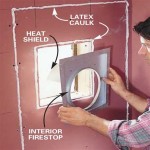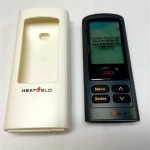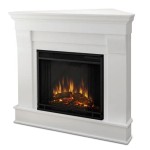Choosing the Right Tile Adhesive for Your Fireplace Hearth
Selecting the appropriate tile adhesive for a fireplace hearth is a critical aspect of ensuring both the aesthetic appeal and structural integrity of the installation. The hearth, being the area directly surrounding the fireplace opening, is subject to unique conditions, including fluctuations in temperature, potential exposure to moisture, and the weight of the surrounding materials. Therefore, opting for a standard tile adhesive may not provide the necessary long-term performance and resistance to these specific stresses. This article will explore the key considerations when selecting tile adhesive for a fireplace hearth, focusing on factors such as heat resistance, flexibility, and the types of tiles being used.
The primary function of tile adhesive, also known as thin-set mortar, is to securely bond tiles to a substrate. In the context of a fireplace hearth, this bond must withstand the rigors of repeated heating and cooling cycles. Traditional tiling projects in areas not exposed to such temperature variations can often utilize standard adhesives. However, the extreme conditions associated with a fireplace hearth necessitate the use of a specialized adhesive specifically formulated for high-temperature applications.
Furthermore, the choice of tile adhesive is heavily influenced by the type of tile being installed. Different materials, such as ceramic, porcelain, natural stone, and even glass, possess unique characteristics regarding porosity, weight, and expansion/contraction rates. These variations dictate the adhesive properties required to ensure a durable and long-lasting bond. A mismatch between the tile type and the adhesive can lead to tile cracking, debonding, and ultimately, the need for costly repairs.
Understanding Heat Resistance and Thermal Expansion
One of the most important properties to consider when choosing tile adhesive for a fireplace hearth is its heat resistance. The adhesive must be able to withstand the high temperatures generated by the fireplace without degrading, becoming brittle, or losing its bonding strength. Manufacturers typically specify the maximum temperature the adhesive can tolerate. This specification should be carefully reviewed and compared against the expected operating temperatures of the fireplace hearth.
High-temperature adhesives often incorporate specialized polymers and additives that enhance their thermal stability. These additives help maintain the adhesive's flexibility and prevent it from becoming rigid and prone to cracking under heat. Some adhesives are even designed to be refractory, meaning they can withstand extremely high temperatures without melting or decomposing. Refractory adhesives are often used in direct contact with firebricks or other high-temperature materials within the firebox itself, although they are less common for the hearth surface.
In addition to heat resistance, the adhesive's ability to accommodate thermal expansion is crucial. All materials expand and contract with changes in temperature. The tiles and the substrate beneath them will expand at different rates. If the adhesive is too rigid, it will not be able to absorb these differential movements, leading to stress buildup and potential tile failure. Therefore, a flexible adhesive is preferred for fireplace hearth applications, as it can accommodate these movements without compromising the bond.
Flexibility is typically indicated by the presence of polymers in the adhesive formulation. These polymers act as elasticizers, allowing the adhesive to stretch and compress without cracking. The level of flexibility required will depend on the size and type of tiles being used, as well as the expected temperature fluctuations. Larger tiles, in particular, are more susceptible to stress from thermal expansion, so a highly flexible adhesive is generally recommended.
Matching Adhesive to Tile Type
The type of tile selected for the fireplace hearth plays a significant role in determining the most suitable adhesive. Different tile materials have varying porosity, which affects the adhesive's ability to bond effectively. Porous tiles, such as some types of ceramic and natural stone, tend to absorb more moisture from the adhesive. This can lead to rapid drying and weakening of the bond if the adhesive is not formulated to accommodate these properties.
For porous tiles, a modified thin-set mortar is typically recommended. Modified thin-set mortars contain polymers that improve their water retention and bonding strength. These polymers help the adhesive adhere more effectively to the tile surface, even in the presence of moisture absorption. They also enhance the adhesive's flexibility, providing additional protection against cracking and debonding.
Non-porous tiles, such as porcelain and glass, present a different challenge. These tiles do not absorb moisture, so the adhesive must rely solely on mechanical adhesion to create a strong bond. Special adhesives designed for non-porous tiles often contain additives that improve their grab and initial tack. These additives help the adhesive hold the tile in place during the installation process, preventing it from slipping or sliding before it has a chance to cure.
Natural stone tiles, such as granite, marble, and slate, require particular attention. Some natural stones are sensitive to staining or discoloration from certain adhesives. It is essential to use a neutral-cure adhesive specifically formulated for use with natural stone. These adhesives are designed to prevent staining and maintain the natural beauty of the stone.
Furthermore, the weight of the tile should be considered when selecting the adhesive. Larger and heavier tiles require an adhesive with high sag resistance. Sag resistance refers to the adhesive's ability to hold the tile in place on a vertical or sloped surface without sagging or sliding down. Adhesives with high sag resistance typically contain thickening agents that increase their viscosity and prevent them from running.
Surface Preparation and Application Techniques
Even the best tile adhesive will fail if the substrate is not properly prepared. The substrate, which is the surface to which the tiles are being applied, must be clean, dry, and structurally sound. Any loose or crumbling material should be removed, and the surface should be thoroughly cleaned to remove any dust, dirt, or grease. A clean surface ensures that the adhesive can bond directly to the substrate, creating a strong and durable connection.
If the substrate is uneven, it may be necessary to apply a leveling compound before tiling. Leveling compounds are self-leveling mortars that can be used to create a smooth and even surface. This is particularly important for larger tiles, as any unevenness in the substrate can lead to uneven tile surfaces and potential cracking.
Once the substrate is prepared, the adhesive should be mixed according to the manufacturer's instructions. Proper mixing is essential to ensure that the adhesive has the correct consistency and bonding properties. Too much water can weaken the adhesive, while too little water can make it difficult to spread. A notched trowel should be used to apply the adhesive to the substrate. The size of the notches on the trowel will depend on the size and type of tile being used. The notches create ridges of adhesive that provide a channel for air to escape, ensuring that the tile is fully bonded to the substrate.
When applying the tiles, it is important to press them firmly into the adhesive and use a slight twisting motion to ensure good contact. Spacers should be used to maintain consistent grout joints. Once the adhesive has cured, the grout can be applied. The grout should be selected to complement the tile and provide a waterproof seal.
In summary, selecting the appropriate tile adhesive for a fireplace hearth involves careful consideration of several factors, including heat resistance, flexibility, tile type, and substrate preparation. Choosing an adhesive specifically designed for high-temperature applications and compatible with the tile material will ensure a durable and aesthetically pleasing installation. Proper surface preparation and application techniques are equally important for maximizing the adhesive's performance and preventing tile failure.

How To Tile A Fireplace My Uncommon Slice Of Suburbia
:strip_icc()/101343186-8909e34a95d74e0087ce39e27577ca41.jpg?strip=all)
How To Tile A Fireplace Hearth

Easy Stick On Tiles Update Your Fireplace Porch Daydreamer

How To Tile Over A Brick Hearth Shine Your Light

Tiling The Fireplace Surround Designatedspacedesign Com

Diy Fireplace Makeover With Vinyl Tiles Sew Much Ado
:fill(white)/www.toppstiles.co.uk/static/uploads/2020/07/Fireplace-tiling-Batik.jpg?strip=all)
Tips For Decorating Your Fireplace Topps Tiles

Can I Use L And Stick Tile For Fireplace Surround Yes It Is A Gre Commomy
/102661017-6a23c040b71843379188b96b21ac1a08.jpg?strip=all)
How To Tile A Fireplace

How To Tile Over A Brick Hearth Shine Your Light
Related Posts








